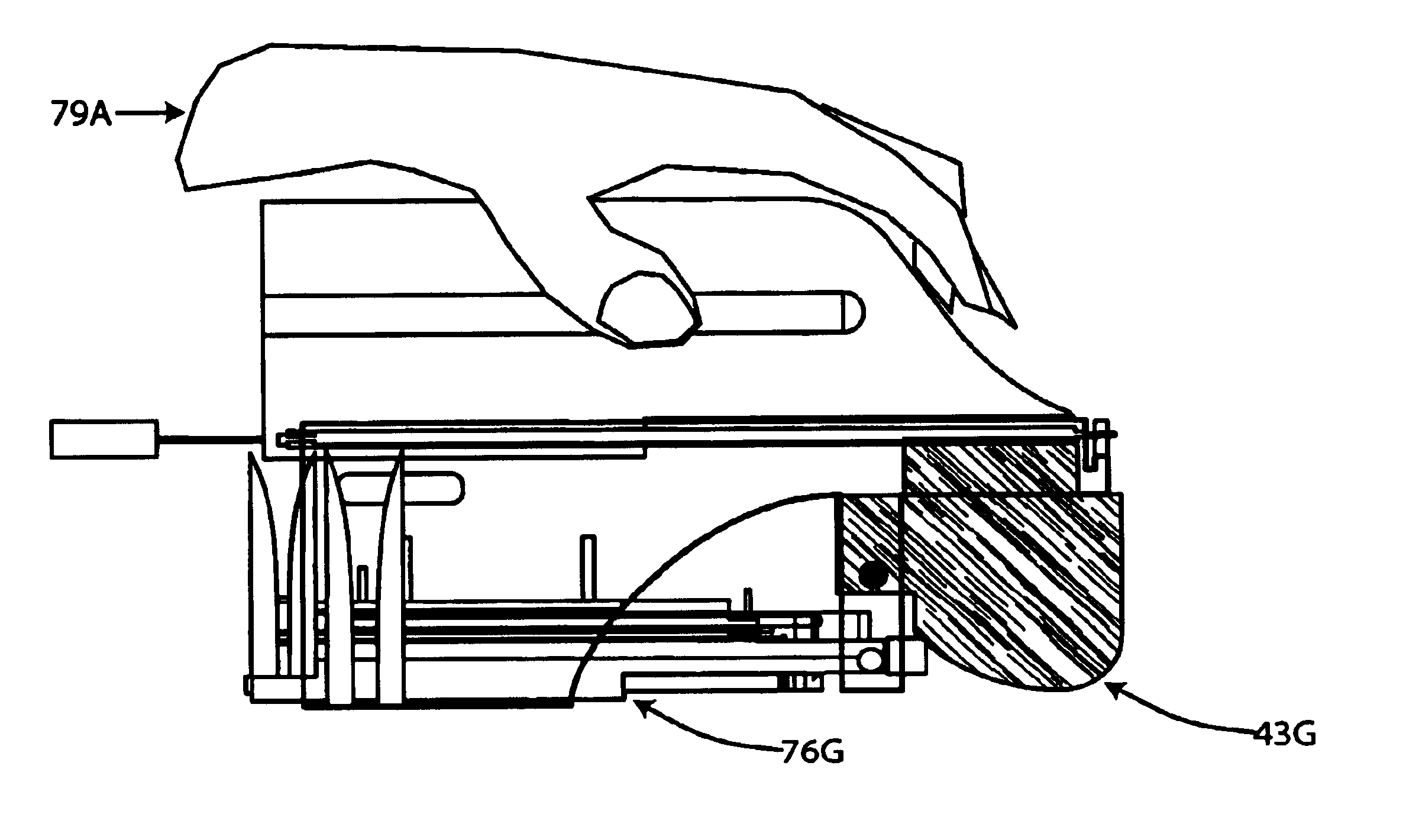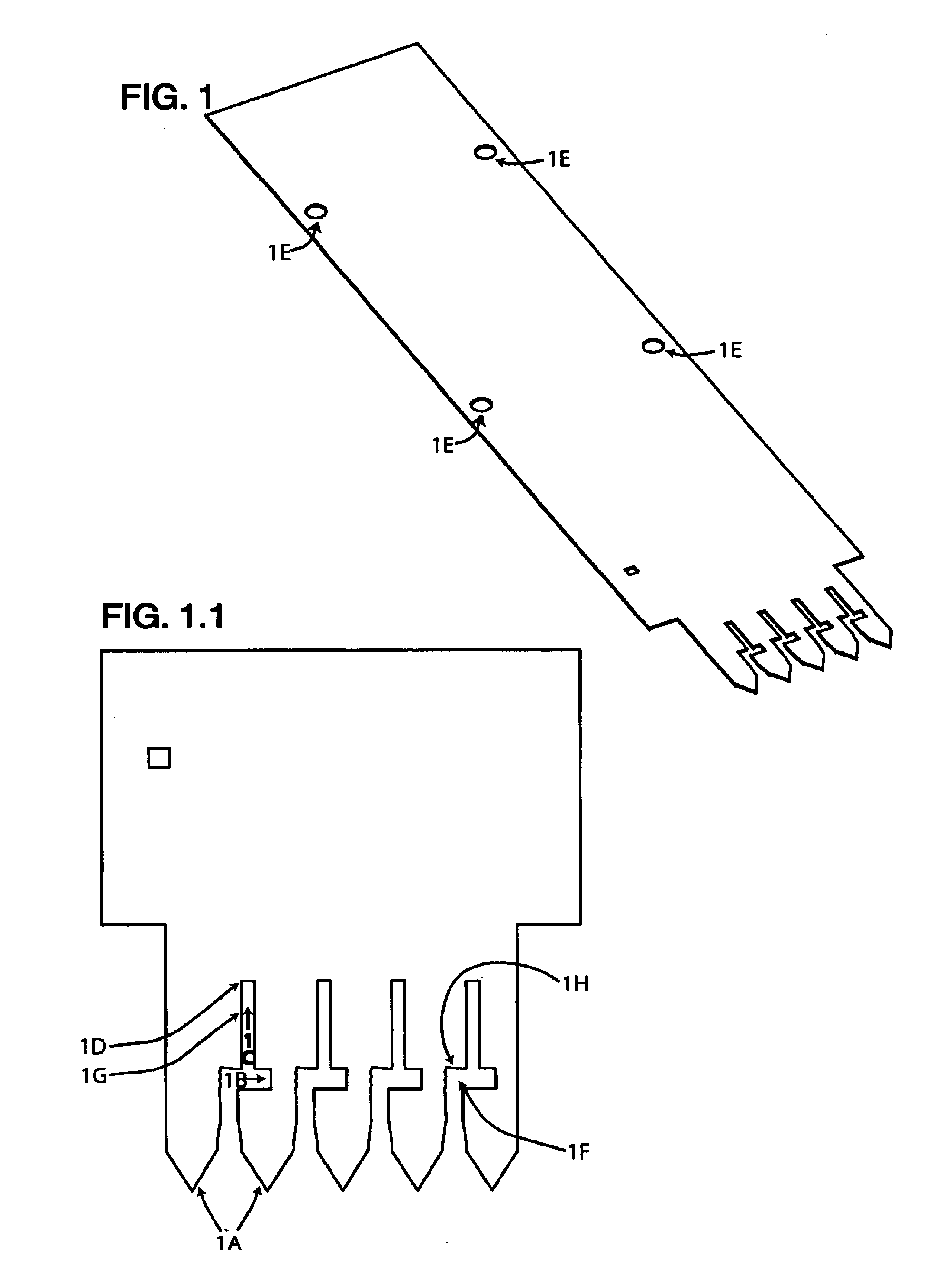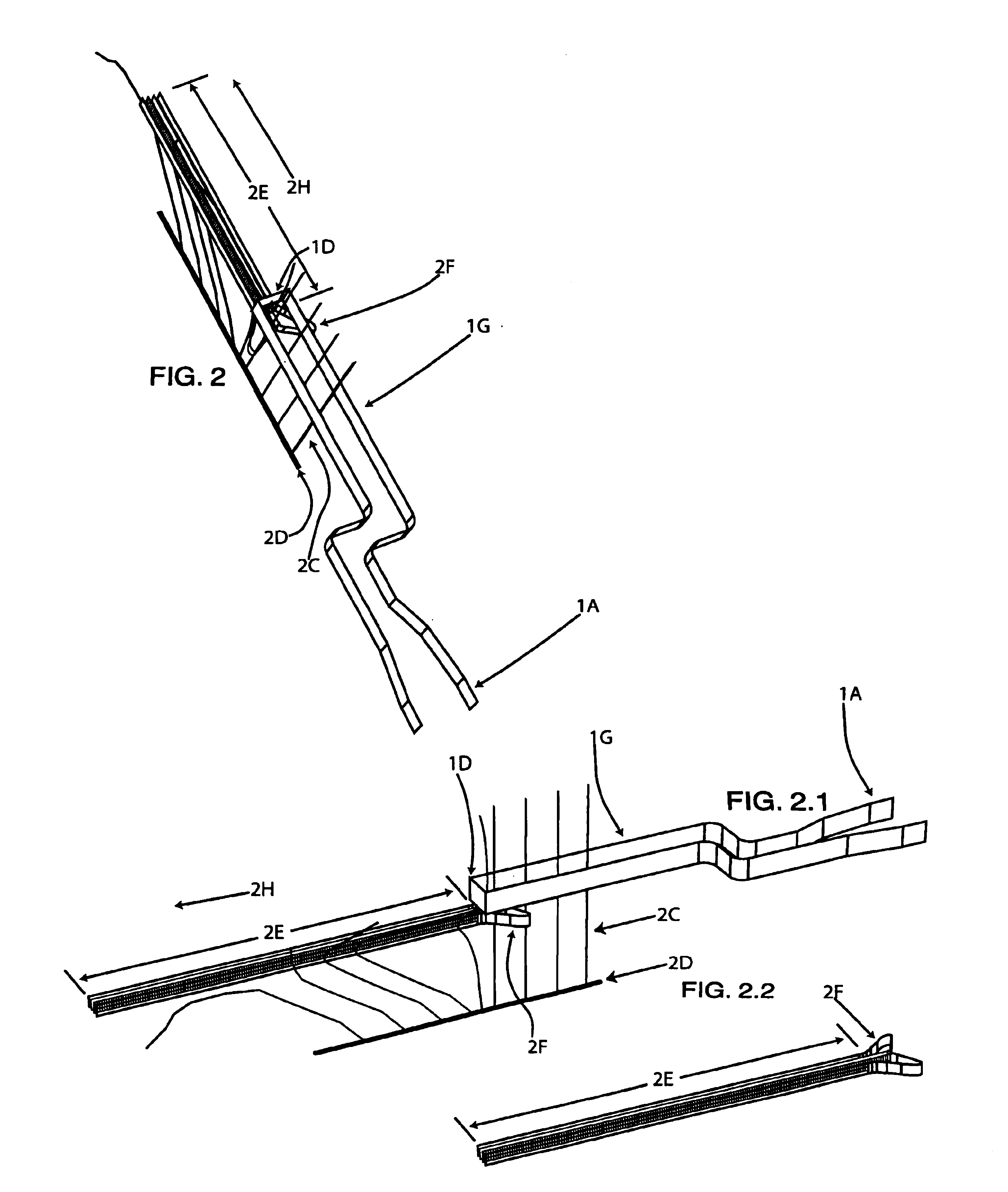Automated hair isolation and processing system
a processing system and hair technology, applied in the field of hair care industry, can solve the problems of hair appearing unnaturally the same color all, opaque colorants that are functionally equivalent to opaque printing inks and cannot be applied to all hairs on the head at once, and achieve the effect of narrowing the hair holding channels in places
- Summary
- Abstract
- Description
- Claims
- Application Information
AI Technical Summary
Benefits of technology
Problems solved by technology
Method used
Image
Examples
first embodiment
[0208]The most complex and challenging part of my invention to understand is this stack of about twenty layers. In general, I call this stack the processing circuit stack because it guides hairs through a planned path during the isolation and hair extension attachment processing. Depending on the context I may also call it similar names like the attachment circuit stack, the attachment stack, the attacher stack, the attacher, and the processing stack. In the case of the first embodiment, I will describe a system whose goal is hair extension attachment; I will call this stack the attachment circuit stack because it guides hairs through a planned path during the process of hair-extension attachment. For short, I may refer to it either as the attachment stack or attachment circuit.
[0209]To better understand the attachment circuit, I encourage you to think of a conventional electric hair trimmer as I describe it to you. Remember that the attachment circuit is very analogous to the movin...
second embodiment
[0744]This second embodiment of the sub-hair-diameter spaced pushback gate system uses a metering area composed of a series of attached compartments that become increasingly narrower, usually with increasing proximity to the attachment area. Referring to FIG. 116, this set of compartments 116A is usually formed by notches 116B in an entrance gate 116C that is imposed on an edge of a hair channel 116D. Each sub-compartment allows only hairs of an extremely specific diameter range in it. For example, a hair of an extremely thin diameter will not stop moving forward through the compartments until it reaches the entrance to a sub-compartment too thin for it, or the dead-end of the very thinnest sub-compartment. In a similar manner, a relatively wide diameter hair will stop much sooner in one of the wider compartments. If there are any thinner diameter hairs trailing a wider diameter hair, they will be stuck behind it and this is fine.
[0745]Once we have hairs of a specified diameter rang...
PUM
 Login to View More
Login to View More Abstract
Description
Claims
Application Information
 Login to View More
Login to View More - R&D
- Intellectual Property
- Life Sciences
- Materials
- Tech Scout
- Unparalleled Data Quality
- Higher Quality Content
- 60% Fewer Hallucinations
Browse by: Latest US Patents, China's latest patents, Technical Efficacy Thesaurus, Application Domain, Technology Topic, Popular Technical Reports.
© 2025 PatSnap. All rights reserved.Legal|Privacy policy|Modern Slavery Act Transparency Statement|Sitemap|About US| Contact US: help@patsnap.com



